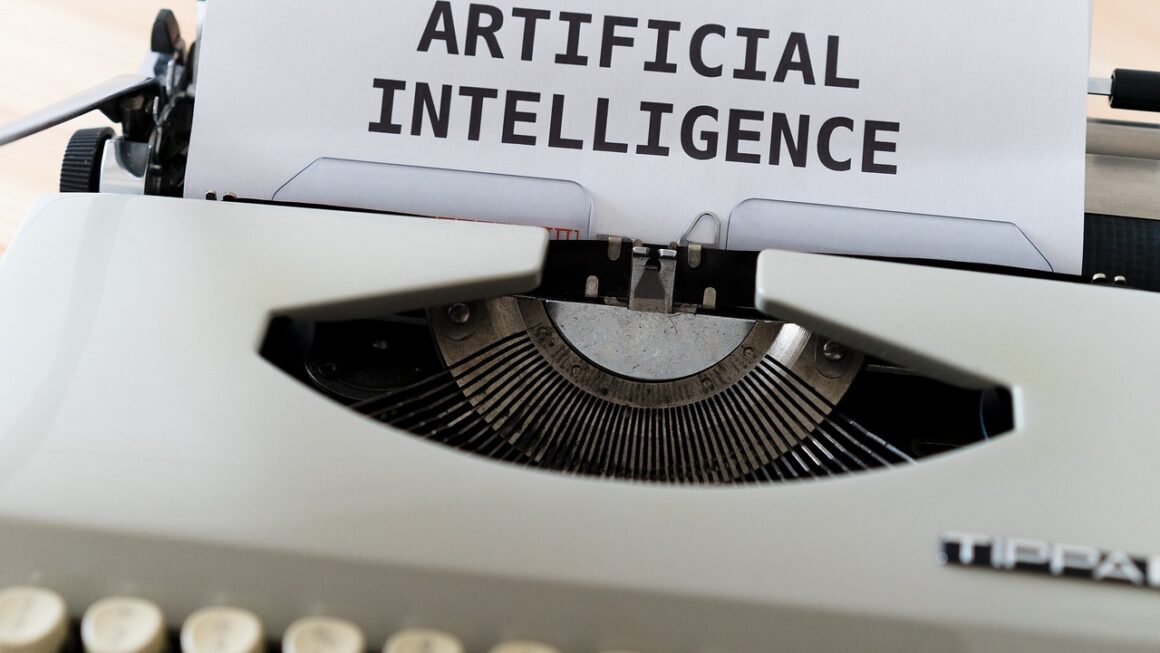Imagine a world where repetitive tasks vanish, freeing your time for creativity and strategic thinking. That world is within reach thanks to AI automation. From streamlining customer service to accelerating data analysis, Artificial Intelligence is revolutionizing how businesses operate, boosting efficiency, and driving innovation. This blog post will delve into the transformative power of AI automation, exploring its applications, benefits, and how you can leverage it to unlock new levels of productivity and growth.
Understanding AI Automation
What is AI Automation?
AI automation involves using artificial intelligence technologies to automate tasks that traditionally require human intelligence. These tasks can range from simple, rule-based processes to complex decision-making scenarios. The core of AI automation relies on algorithms that can learn, adapt, and improve over time, allowing them to handle increasingly intricate and nuanced tasks without constant human intervention.
- Key Technologies:
Machine Learning (ML): Enabling systems to learn from data without explicit programming.
Natural Language Processing (NLP): Allowing computers to understand and process human language.
Robotic Process Automation (RPA): Automating repetitive, rule-based tasks.
Computer Vision: Enabling machines to “see” and interpret images and videos.
How Does AI Automation Work?
The process typically involves the following steps:
For example, consider an AI-powered email marketing campaign. The system collects customer data, analyzes their preferences, and automatically sends personalized emails based on their behavior. The system then tracks the open and click-through rates, using this information to optimize future email campaigns.
Benefits of AI Automation
Increased Efficiency and Productivity
AI automation excels at handling repetitive and time-consuming tasks, freeing up human employees to focus on more strategic and creative work. This leads to significant improvements in overall productivity and efficiency.
- Example: Automating data entry tasks in finance departments can reduce errors and accelerate processing times, allowing financial analysts to focus on more complex tasks like forecasting and risk management.
- Statistics: A McKinsey Global Institute study estimated that up to 45% of work activities could be automated with current technologies.
Reduced Costs
By automating processes, businesses can reduce labor costs, minimize errors, and improve resource allocation. This leads to significant cost savings in the long run.
- Example: Customer service chatbots can handle a large volume of inquiries simultaneously, reducing the need for a large customer service team and lowering operational costs.
- Practical Tip: Identify processes that are highly repetitive and rule-based. These are ideal candidates for AI automation.
Improved Accuracy and Consistency
AI systems are less prone to human error and fatigue, leading to more accurate and consistent results. This is particularly valuable in industries where precision is critical, such as healthcare and finance.
- Example: AI-powered diagnostic tools can analyze medical images with high accuracy, assisting doctors in making more informed diagnoses and improving patient outcomes.
- Details: AI algorithms follow predefined rules and don’t experience fatigue, ensuring consistent performance.
Enhanced Customer Experience
AI automation can personalize customer interactions, provide faster responses, and offer 24/7 support, leading to improved customer satisfaction and loyalty.
- Example: E-commerce companies use AI-powered recommendation engines to suggest products that customers are likely to be interested in, enhancing their shopping experience and driving sales.
- Actionable Takeaway: Analyze customer touchpoints and identify opportunities to automate tasks that can improve the customer experience, such as onboarding processes or issue resolution.
Practical Applications of AI Automation
Customer Service
AI-powered chatbots and virtual assistants can handle a wide range of customer inquiries, provide instant support, and resolve common issues, freeing up human agents to focus on more complex cases.
- Details: These chatbots can be integrated into websites, messaging apps, and social media platforms.
- Example: Zendesk’s Answer Bot uses AI to understand customer questions and provide relevant articles or solutions.
Marketing and Sales
AI automation can personalize marketing campaigns, identify leads, predict customer behavior, and optimize sales processes, leading to increased revenue and improved ROI.
- Example: HubSpot uses AI to score leads based on their likelihood to convert, allowing sales teams to prioritize their efforts and close more deals.
- Practical Tip: Use AI to analyze customer data and identify patterns that can inform your marketing strategies.
Finance and Accounting
AI automation can automate tasks such as invoice processing, expense reporting, fraud detection, and financial forecasting, improving efficiency and accuracy in financial operations.
- Example: BlackLine uses AI to automate reconciliation processes, reducing errors and saving time for accounting professionals.
- Details: AI algorithms can analyze large datasets to identify anomalies and detect fraudulent transactions in real-time.
Healthcare
AI automation can assist with tasks such as medical diagnosis, drug discovery, patient monitoring, and administrative tasks, improving patient care and reducing costs.
- Example: IBM Watson Health uses AI to analyze medical records and provide personalized treatment recommendations.
- Actionable Takeaway: Explore how AI can be used to improve patient outcomes and streamline administrative processes in your healthcare organization.
Manufacturing
AI automation can optimize production processes, improve quality control, predict equipment failures, and manage supply chains, leading to increased efficiency and reduced downtime.
- Example: Siemens uses AI to monitor and optimize production lines, improving efficiency and reducing waste.
- Details: Predictive maintenance algorithms can analyze sensor data to identify potential equipment failures before they occur, preventing costly downtime.
Implementing AI Automation
Identifying Opportunities
The first step is to identify processes that can be automated using AI. Look for tasks that are repetitive, rule-based, and data-intensive.
- Practical Tip: Conduct a process audit to identify areas where AI automation can have the greatest impact.
- Details: Consider tasks that involve large volumes of data, require quick decision-making, or are prone to human error.
Choosing the Right Tools and Technologies
Select AI tools and technologies that are appropriate for your specific needs and budget. Consider factors such as scalability, ease of integration, and vendor support.
- Example: Consider tools from providers like Google Cloud AI, Amazon AI, and Microsoft Azure AI.
- Actionable Takeaway: Research different AI platforms and tools and choose the ones that best align with your business goals and technical capabilities.
Training and Integration
Train your team on how to use the new AI tools and integrate them into your existing workflows. This may require providing training programs, creating new job roles, and modifying existing processes.
- Details: Emphasize the importance of data quality and security when integrating AI into your systems.
- Example: Hold workshops and training sessions to help your team understand how to use the new AI tools effectively.
Monitoring and Optimization
Continuously monitor the performance of your AI systems and make adjustments as needed to improve accuracy and efficiency. This includes tracking key metrics, analyzing data, and refining your AI models.
- Practical Tip: Establish clear metrics for measuring the success of your AI automation initiatives.
- Actionable Takeaway: Regularly review the performance of your AI systems and make adjustments to ensure they are delivering the desired results.
Challenges and Considerations
Data Quality and Availability
AI systems require large amounts of high-quality data to train and operate effectively. Ensuring data quality and availability can be a significant challenge.
- Actionable Takeaway: Implement data governance policies to ensure data accuracy, completeness, and consistency.
Skills Gap
Implementing and managing AI systems requires specialized skills, such as data science, machine learning, and AI engineering. Bridging the skills gap can be a barrier to adoption.
- Practical Tip: Invest in training programs to upskill your existing workforce or hire professionals with the necessary AI skills.
Ethical Considerations
AI automation raises ethical concerns related to bias, fairness, transparency, and accountability. It is important to address these concerns proactively to ensure that AI systems are used responsibly.
- Example: Be wary of biased algorithms. Ensure fairness by using representative datasets for training the models.
Security and Privacy
AI systems can be vulnerable to cyberattacks and data breaches. It is important to implement robust security measures to protect your AI systems and data.
- Actionable Takeaway: Implement security measures such as encryption, access controls, and intrusion detection systems to protect your AI systems and data.
Conclusion
AI automation is transforming the business landscape, offering unprecedented opportunities to improve efficiency, reduce costs, enhance customer experiences, and drive innovation. By understanding the principles of AI automation, identifying opportunities for implementation, and addressing the associated challenges, businesses can unlock the full potential of this transformative technology. As AI continues to evolve, those who embrace and adapt to these changes will be best positioned to thrive in the future.




